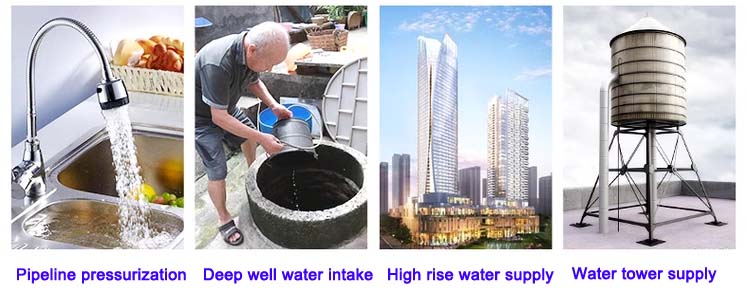Galician
- Afrikaans
- Albanian
- Amharic
- Arabic
- Armenian
- Azerbaijani
- Basque
- Belarusian
- Bengali
- Bosnian
- Bulgarian
- Catalan
- Cebuano
- Corsican
- Croatian
- Czech
- Danish
- Dutch
- English
- Esperanto
- Estonian
- Finnish
- French
- Frisian
- Galician
- Georgian
- German
- Greek
- Gujarati
- Haitian Creole
- hausa
- hawaiian
- Hebrew
- Hindi
- Miao
- Hungarian
- Icelandic
- igbo
- Indonesian
- irish
- Italian
- Japanese
- Javanese
- Kannada
- kazakh
- Khmer
- Rwandese
- Korean
- Kurdish
- Kyrgyz
- Lao
- Latin
- Latvian
- Lithuanian
- Luxembourgish
- Macedonian
- Malgashi
- Malay
- Malayalam
- Maltese
- Maori
- Marathi
- Mongolian
- Myanmar
- Nepali
- Norwegian
- Norwegian
- Occitan
- Pashto
- Persian
- Polish
- Portuguese
- Punjabi
- Romanian
- Russian
- Samoan
- Scottish Gaelic
- Serbian
- Sesotho
- Shona
- Sindhi
- Sinhala
- Slovak
- Slovenian
- Somali
- Spanish
- Sundanese
- Swahili
- Swedish
- Tagalog
- Tajik
- Tamil
- Tatar
- Telugu
- Thai
- Turkish
- Turkmen
- Ukrainian
- Urdu
- Uighur
- Uzbek
- Vietnamese
- Welsh
- Bantu
- Yiddish
- Yoruba
- Zulu
Telephone: +86 13120555503
Email: frank@cypump.com
Nov . 27, 2024 20:40 Back to list
Selecting the Right Pumps for Wastewater and Effluent Management Systems
Sewage and Effluent Pumps An Essential Component of Wastewater Management
In modern wastewater management systems, the effective handling of sewage and effluent is crucial for maintaining public health and environmental safety. Among the vital components in these systems are sewage and effluent pumps, designed to transport wastewater from one location to another. Their importance cannot be overstated, as they play a central role in the treatment process, ensuring that wastewater is efficiently moved to treatment facilities or disposed of appropriately.
Understanding Sewage and Effluent
Before delving into the specifics of sewage and effluent pumps, it is essential to clarify the terms ‘sewage’ and ‘effluent.’ Sewage typically refers to the combined liquid waste from household and industrial sources, which often contains a mix of water, human waste, food scraps, and various chemicals. Effluent, on the other hand, is treated wastewater that is discharged from a wastewater treatment plant, often into water bodies or used for irrigation. Proper management of both sewage and effluent is critical to prevent environmental contamination and protect water resources.
Types of Pumps
Sewage and effluent pumps come in various types, designed for specific applications. The two most common types are submersible pumps and centrifugal pumps.
1. Submersible Pumps These pumps are designed to be submerged in the wastewater. They are often used in residential and industrial applications where the pump is directly submerged in the sewage or effluent. Advantages of submersible pumps include their ability to handle larger solids and their efficiency in lifting wastewater to the surface.
2. Centrifugal Pumps Unlike submersible pumps, centrifugal pumps are typically located above the wastewater level. They use a rotating impeller to move liquid through the pump. These pumps are commonly used for effluent transfer after treatment, as they can efficiently move treated water away from the treatment facility.
sewage and effluent pumps

Applications
Sewage and effluent pumps have diverse applications across various sectors. In residential areas, they are often used in sewage systems where gravity flow is insufficient, such as in low-lying areas or where wastewater needs to be pumped uphill. In commercial and industrial settings, these pumps are essential for managing the wastewater generated by factories, processing plants, and other facilities.
Moreover, sewage and effluent pumps are critical in municipal wastewater treatment plants, where they move raw sewage to the treatment stage and help with the discharge of treated effluent into natural water bodies. This process ensures that the wastewater is treated properly before it poses a risk to public health or the environment.
Challenges and Considerations
Despite their importance, sewage and effluent pumps face several challenges that can impact their performance and longevity. One of the most pressing issues is the risk of clogging due to solid waste, grease, and debris. Regular maintenance and monitoring are necessary to ensure that these systems function correctly and efficiently.
Additionally, selecting the right pump for a particular application is crucial. Factors such as the type of wastewater, the required flow rate, and the head pressure must be considered. Using the wrong type of pump can lead to operational inefficiencies or even breakdowns, resulting in costly repairs and potential environmental hazards.
Conclusion
Sewage and effluent pumps are indispensable in the realm of wastewater management. They perform the crucial task of transporting sewage and effluent through systems designed to treat or dispose of waste safely. As urbanization and industrial activities continue to grow, the demand for effective sewage and effluent pumping solutions will only increase. Investing in reliable pump systems, regular maintenance, and technology advancements is key to maintaining efficient wastewater processes. In doing so, we protect public health and the environment while ensuring sustainable water management practices for future generations.
-
Custom Drilling Mud and Slurry Pump Supplier - High Efficiency, Tailored Solutions
NewsJun.10,2025
-
Supply Vertical Submersible Sewage Pump High-Efficiency WQ/QW Pumps Supplier
NewsJun.10,2025
-
Premium Sewage Ejection System & Pumps Efficient Waste Removal
NewsJun.09,2025
-
Premium Wholesale Slurry Pump Impellers Durable & Efficient Slurry Handling
NewsJun.09,2025
-
Top Sewage Pump Companies Durable Industrial Solutions for Efficiency
NewsJun.09,2025
-
Heavy Duty Slurry Pumps - OEM High Performance & Bulk Wholesale
NewsJun.09,2025










